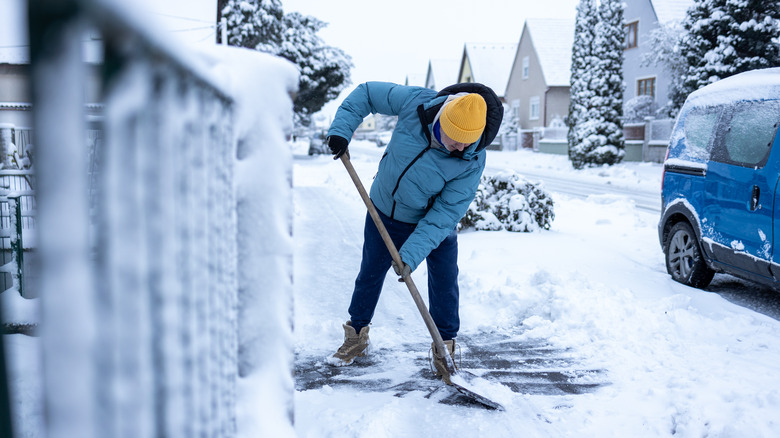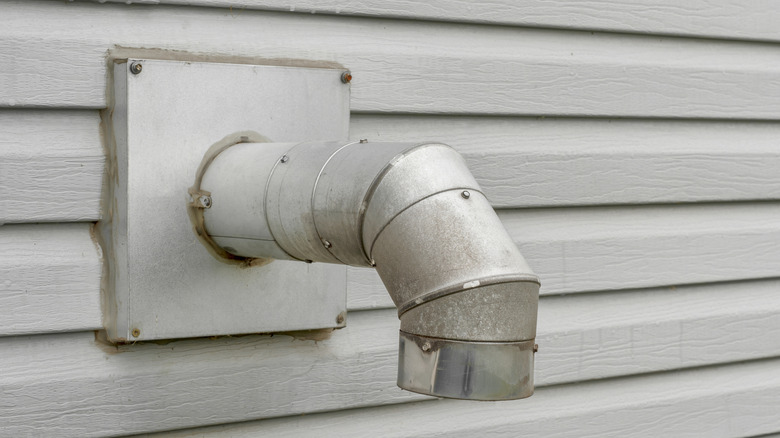One Place You're Forgetting To Remove Snow (& It Could Cause Major Problems)
When winter covers everything in a blanket of snow, most homeowners prioritize clearing their snowy front steps, driveways, sidewalks, and even roofs. But there's one crucial spot that often gets overlooked: your vents. Ignoring snow buildup on and around vents can lead to serious issues, like inefficiency in your home's heating system or dangerous carbon monoxide buildup.
Whether it's a vent or exhaust pipe for your dryer, fireplace, or furnace, it is vital to your safety to keep these spots clear of snow. A key concern for these is the risk of carbon monoxide seeping into your home. This can cause poisoning when it accumulates in the air you breathe, leading to tissue damage and, in severe cases, death. This gas is produced when fuel burns in appliances like fireplaces, hot water heaters, or furnaces. Fortunately, properly functioning vents provide the airflow that keeps things running smoothly. Because you can't see, smell, or taste carbon monoxide, you won't notice its presence. This is why it's crucial to keep vents free from blockages, including preventing them from getting clogged by snow.
Failing to clear snow from vents can lead to several other problems beyond carbon monoxide risks, including damage to appliances and overheating. When snow accumulates over vent pipes, your heating system's built-in safety switch may shut down the entire system to prevent further issues. This can leave you without heat until the system is inspected and repaired, which is particularly inconvenient and potentially dangerous during cold weather.
How to keep vents safe from snow
The next time it snows, make sure to check that your intake pipes and exhaust vents are clear. Start by identifying what to look for and locating the vents outside, especially if snow has already accumulated. Typically, you should check pipes and vents for furnaces, stoves, fireplaces, and dryers. But there are different types of vents. Some, like furnace and water heater vents, are usually white PVC or aluminum pipes sticking out of the wall. Others, like dryer vents, may look like small openings near the ground with some type of covering.
If you're unsure where to find these vents outside your home, begin by locating the appliance indoors. Look for the pipe leading from the appliance to the exterior. This pipe may be made of PVC or aluminum. Follow it to the exterior wall to determine where it exits outside.
Once outside, you should be able to spot these vents. When clearing them from snow, be cautious not to damage them. While you can carefully shovel snow around the vents, use your hand or a broom to gently remove snow and ice directly from them. And, ahead of the next snowfall, consider marking the wall near the vents to make them easier to locate even if they are already covered.

